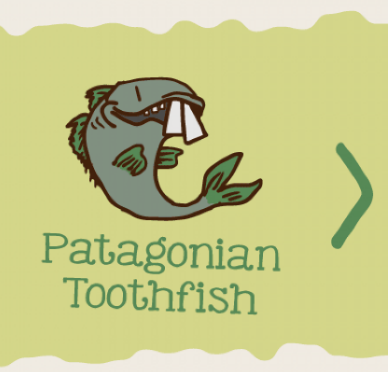
Foods that have been renamed
23rd May 2022
Would you eat Locusts, Dolphinfish, or a Toothfish? How about Sky Prawns, Mahi-Mahi, or Chilean Sea Bass?
The name of a food, and the way it’s described, plays a huge part in how appetising we perceive it to be. There’s a reason restaurants use tricks like listing a product’s provenance, stating the method of cooking, and describing an ingredient’s texture. It’s why we also see ingredients and whole dishes undergo rebrands.
It all comes down to sales. If changing how something is described boosts the number of people that want to eat it, then it makes sense for food producers, manufacturers, and retailers to give something a new name and with it, a new image.
Below are nine foods that underwent a rebrand in order to boost sales from consumers just like you.

Now: Chilean Sea Bass
Then: PatagonianToothfish
It might taste delicious but who wants to see the word ‘tooth’ on a restaurant menu? Enter, Chilean Sea Bass. Despite its name, Chilean Sea Bass is neither (for the most part) from Chile, or (in any conceivable way) sea bass. It’s actually a type of cod. Though it’s doubtful those profiting from it care: since its ‘rebrand’ its price per pound has risen from $8 to more than $25.
Now: Red Snapper
Then: Rockfish
Several species of what used to be known as rockfish are now more commonly referred to as red snapper – at least when fished from the Pacific Ocean. Why? Because consumers are familiar with ‘red snapper’ meaning fish labelled as such sells better and can command a higher price. If you want genuine red snapper, it can only be found in the Atlantic Ocean.
Now: Sky Prawns
Then: Locusts
In 2004 Australia was dealing with its worst locust plague for 30 years. Their solution? To get people to eat them. The government rebranded the pests as sky prawns and launched a book ‘Cooking with Sky Prawns’, which contained more than 20
locust, sorry, sky prawn recipes.
Now: Honey Monster Puffs
Then: Sugar Puffs
This rebrand didn’t stem from a need to make the product more appetising, but rather a desire to present a ‘healthier’ image to consumers. This from a product made of wheat, five types of sugar, and some added vitamins…
Wheat, Glucose Syrup, Sugar, Honey (3.6%), Caramelised Sugar, Molasses, Niacin, Iron, Riboflavin (B2), Thiamin (B1)
We suppose you can’t blame a brand for trying.
Now: Dried Plums
Then: Prunes
Prunes are tricky things to market thanks to their long-term connotations with digestive problems and the elderly. To get around this, Californian prune producers rebranded the dried fruit ‘dried plums’, which to be fair to them, is precisely what a prune is.
Now: Orange Roughy
Then: Slimehead
Like the toothfish, the unfortunately named ‘slimehead’ suffered at the hands of fickle consumers who weren’t keen on eating something named after the mucous-filled canals that adorn its face.
In order to boost sales ‘slimehead’ was renamed ‘orange roughy’, however the name-change might have been in vain since the species is in fact highly unsustainable and consumers are being encouraged not to eat it.
Now: Isolated Fructose (Or Simply, Fructose)
Then: High Fructose Corn Syrup
High Fructose Corn Syrup (or HFCS) has been linked to a multitude of conditions including obesity and cancer. As consumers became increasingly aware of the potential risks from eating HFCS, food manufacturers began to panic - sales were going to drop if they didn’t do something – but what could they do? Remove HFCS from their products? Nope. They had a far cleverer solution up their sleeves. They simply changed the ingredient’s name to the innocuous-sounding ‘fructose’.
Now: Baby Carrots
Then: Carrots
In an effort to encourage healthier eating habits, especially in children, food manufacturers decided to cultivate miniature, sweeter tasting versions of the humble carrot, cut them to a uniform shape and size, and package them like crisps and other junk foods – complete with a cartoon mascot.
Now: Mahi-Mahi
Then: Dolphinfish

